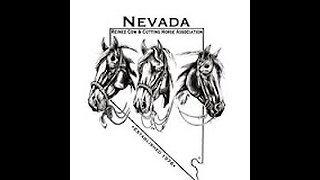Premium Only Content

Lava formation & types🔥🔥🔥|| #rumble
Lava formation & types.
Lava is a type of molten rock that is expelled from a volcano during an eruption. It is a fiery, glowing substance that can range in color from bright orange to dark red, depending on the temperature and chemical composition of the magma from which it is derived. Lava is an important part of Earth's geological history and has played a critical role in shaping the planet's surface and creating new landforms.
Lava is formed deep beneath the Earth's surface in the mantle, where temperatures can reach several thousand degrees Celsius. The mantle is a layer of hot, molten rock that lies beneath the crust, and it is the source of all volcanic activity. When pressure builds up within the mantle, magma is forced up through cracks and fissures in the Earth's crust, eventually reaching the surface as lava.
Once lava reaches the surface, it can take several different forms depending on its composition and the conditions under which it solidifies. The most common type of lava is called basaltic lava, which is low in viscosity and can flow easily over long distances. Basaltic lava is typically very hot, with temperatures ranging from 1,000 to 1,200 degrees Celsius, and it can travel at speeds of up to 60 kilometers per hour.
Another type of lava is called andesitic lava, which is higher in viscosity than basaltic lava and tends to form more explosive eruptions. Andesitic lava is typically cooler than basaltic lava, with temperatures ranging from 800 to 1,000 degrees Celsius, and it can create steep-sided cones of solidified lava known as stratovolcanoes.
A third type of lava is called rhyolitic lava, which is the most viscous and explosive type of lava. Rhyolitic lava is very cool, with temperatures ranging from 650 to 800 degrees Celsius, and it can form dome-shaped volcanoes with steep sides.
Regardless of its type, lava is an incredibly powerful force that can destroy everything in its path. When a volcano erupts, lava can flow for miles, burying homes, roads, and entire towns in its wake. It can also create new landforms, such as islands, when it solidifies and builds up over time.
One of the most famous examples of a lava flow is the eruption of Mount Vesuvius in 79 AD, which buried the ancient Roman cities of Pompeii and Herculaneum in Italy. The lava from this eruption was made of andesitic and rhyolitic rock, which solidified quickly and preserved the cities in remarkable detail, providing archaeologists with a wealth of information about life in ancient Rome.
In modern times, volcanic eruptions and lava flows continue to pose a threat to people and communities around the world. In 2018, the eruption of Kilauea volcano in Hawaii sent lava flowing into residential areas, destroying more than 700 homes and forcing thousands of people to evacuate. While volcanic activity can be incredibly destructive, it is also an important part of the Earth's natural processes and plays a critical role in shaping the planet's surface over time.
Overall, lava is a fascinating and powerful force of nature that has captivated human imagination for centuries. From the destructive power of volcanic eruptions to the creation of new landforms and the preservation of ancient civilizations, lava is a reminder of the incredible forces that shape our planet and our place in the world.
-
 15:53
15:53
The Connect: With Johnny Mitchell
14 hours ago $8.87 earnedThe Truth About Ross Ulbricht & The Silk Road: How One Man Became The Internet's BIGGEST Drug Dealer
46.1K10 -
 22:53
22:53
The Brett Cooper Show
2 days ago $10.09 earnedThe Rise of Fake Gurus & Online Cults | Episode 23
49.4K29 -
 14:59:18
14:59:18
Total Horse Channel
18 hours agoWinnemucca Spring Spectacular Cow Horse Show and Derby - Saturday
51.4K5 -
 LIVE
LIVE
After Work Gaming
7 hours ago $1.52 earned“🍺 SOJU SATURDAY “🍺 THE FINALS SEASON 6
152 watching -
 19:01
19:01
Russell Brand
13 hours agoTheo Von Just SHOCKED EVERYBODY With His Take on Trump Tariffs
100K109 -
 14:22
14:22
Tundra Tactical
8 hours ago $5.47 earnedTRUMP DOJ Decides CZ Scorpion Is A Decepticon.
47.2K15 -
 4:53:37
4:53:37
Culturama Podcast
6 hours ago $4.52 earnedEaster Special! Hollow Knight Stream!
39K4 -
 1:04:29
1:04:29
Sarah Westall
9 hours agoThe Philippines and Massive Stores of Gold for all the People of the World w/ Joseph Allain
60.9K44 -
 17:23
17:23
Exploring With Nug
18 hours ago $7.50 earnedCorvette Found Underwater! Continuing The Search For Laresha Walker!
52.4K2 -
 3:06:31
3:06:31
Damysus Gaming
6 hours agoWeaving into the Deep South: South of Midnight First Play! Part 2
12.1K2